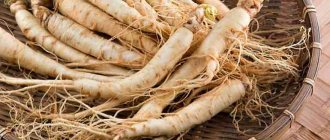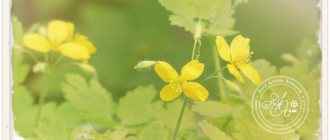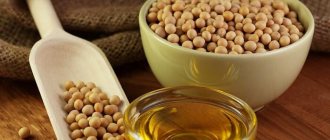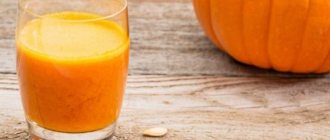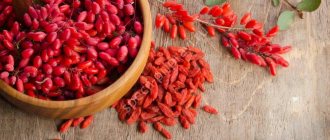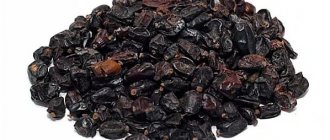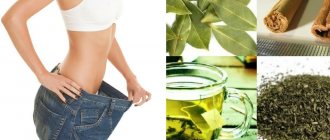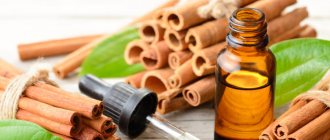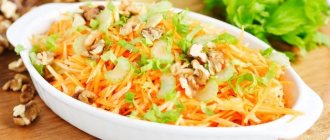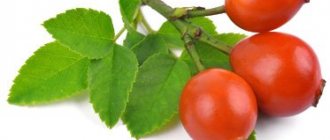Cinnamon: general description of the spice
Cinnamon is an evergreen tree from the Laurel family, the Cinnamon (Ceylon) species. Her homeland is the dense jungle of various countries around the world. The plant reaches 20 meters in height, has durable and beautiful wood. The leaves are quite wide and shiny.
It blooms with miniature peduncles of a soft yellow tone, which are collected in small panicles. After flowering, blue-black fruit berries are formed.
For the first time, the seasoning was imported from China, earning fabulous money for it. Afterwards it was discovered in Sri Lanka and for more than 100 years its supply came only from this source. As the world developed, the plant was cultivated in the West Indies, the Seychelles, and Asia. Today, commercial production has been established from the following points: Brazil, India, the island of Madagascar, Vietnam, the islands of Sumatra and Java.
However, the most valuable product is considered to be cinnamon, supplied from Sri Lanka. It is distinguished by its delicate, fragile bark, delicate aroma, warming sweet taste.
The spice is sold on store shelves in the form of rolled up bark tubes, which are collected at certain times of the year on specially designated days - during the rainy season. Afterwards it is specifically dried and given a marketable appearance.
In addition to tubes (sticks), the spice can be seen on sale in a crumbly, ground consistency, in the form of a brown powder. The seasoning is used all over the world. It is used not only in culinary delights of meat dishes, but also for the production of chocolate, marinades, candies, desserts and liqueurs.
Cinnamon, beneficial properties
American citizens season fruit, dairy and non-dairy cereals with the spice. Housewives in Sri Lanka use dried leaves, adding them to soups, thereby emphasizing the richness and aroma of the dish.
Germany is distinguished by its unique mulled wine, which invariably contains spice. And in the Eastern countries, people do not forget their roots and follow tradition when preparing spicy meat dishes - aromatic seasoning is an obligatory component.
Thus, the seasoning is obtained not only from the bark, but all other components of the tree are also involved in the production. This is how vanillin is made from the fruit. They also make a fake out of it - “cloves”. Small flowers are usually used to make essential oils, and the leathery glossy leaves make an exclusive aromatic tea. Even the roots of the plant are processed to produce camphor.
general information
Kinds
There are 3 types of spice:
- Ceylon (cinnamon).
- Chinese (cassia, Indian or fake).
- Malabar (Himalayan cinnamon, Indian laurel, brown or tree cinnamon).
Cinnamon is considered a high-class spice; it has the most delicate taste and aroma. It has beneficial properties that are valued in medicine, cooking, and cosmetology.
Malabar cinnamon has a weak aroma and, unlike sweet Ceylon cinnamon, has a bitter and pungent taste.
The taste and aroma of cassia is the most pungent. Most often, it is what is widely sold under the name “cinnamon”.
It is very simple to distinguish cinnamon and cassia by appearance:
- The color of the Chinese spice stick is dark brown, while the Ceylon spice stick is light yellow.
- The cinnamon stick is easy to break with your hands, which makes its edges look slightly “tattered.” It is impossible to “grind cassia in a mortar or coffee grinder”, but the edge of the tube is smooth.
- The layer thickness of the two species is very different. In Ceylon it is less than a millimeter, in Cassia it is about 2 mm.
Growing places
Ceylon spice is obtained from the bark of Cinnamomum verum, a type of cinnamon tree belonging to the Laurel family, native to Sri Lanka, India, and China. This is an evergreen tree, reaching a height of 15 meters, but the bark of young shoots of two-year-old trees is used to produce spices. The crop is also grown in other countries - Indonesia, Brazil, Guinea, Cambodia, Jamaica, Madagascar, Martinique. But most of the supplies are provided by Sri Lanka.
To produce cassia, another type of tree is used - Cinnamomum cassia, which grows in Southern China, Indochina, Sri Lanka, Sumatra, and Java.
Cinnamon oil
Cinnamon essential oil is obtained from the young shoots and leaves of Cinnamomum verum. Production requires a lot of raw materials - the share of oil is 1-1.5% of the weight of the processed mass.
It has a sweet-spicy, balsamic taste with a bitter tint. For medicinal purposes, it is used externally, internally, and for aromatherapy.
CAREFULLY! The use of concentrated essential oil is strictly prohibited!
The aroma of the oil has a beneficial effect on the patient’s psycho-emotional state, calming, creating a feeling of security, and reducing anxiety. Peppermint oil enhances the effect.
Blends harmoniously with the aromas of essential oils of ylang-ylang, juniper, fir, myrtle, lavender, sage, rose, rosemary, orange, grapefruit, mandarin, bergamot, tea tree, myrrh.
Types and composition of cinnamon
This aromatic seasoning, supplied from Sri Lanka, is presented in fragile sticks, rolled into a tube in several layers. The product has a yellowish-brown color. The sticks are cut into standard sizes of 5 and 10 cm long and weigh approximately 1.5-2.5 grams. This spice is obtained from painstakingly processed bark from one-year-old branches. The collected spices have a sweet, rich taste and a unique aroma.
Read: Klimaktoplan for hot flashes during menopause
The bark is taken not from the first layer - coarsened and hard, but from the second layer. For production, extensive plantations are used, on which young seedlings that are 1-2 years old are planted.
The collection of valuable material occurs from May to October. It is at this moment that the young woody shell easily moves away from its base. For cutting, use a clean, processed copper knife. After drying, the cut bark takes on the appearance of a tube, curling spontaneously. The appearance resembles old papyri.
The last procedure is drying until a rich brown color. Afterwards cutting and sorting occurs.
On modern shelves you can find 4 types of spices:
- Ceylon - the best type, distinguished by its value and healing properties
- Malabar (brown)
- Chinese - fake goods
- Cynamonn (spicy)
The main difference between the original and the fake second-rate is that the real product is sold in sticks, and not in aromatic powder. The seasoning contains a large number of useful vitamins (groups B, A, PP, K, C, E), as well as micro- (zinc, selenium, iron, manganese, copper) and macroelements (phosphorus, potassium, sodium, magnesium, calcium ).
Don't forget about tannins and fiber. In addition, there is a high proportion of essential oils. But in terms of calorie content, the plant stands out as quite heavy, 100 grams. the product contains 247 kcal.
Thus, it is worth noting that the spice is not only a pleasant taste addition to dishes, but also a very effective medicinal substance.
Tips for choosing
Once you have decided to introduce your child to cinnamon, you need to decide which spice to choose: ground or in the form of sticks.
Ground spice has a brighter aroma, but is stored less and quickly loses its pleasant aroma. It must be used within 6 months after opening the package. To extend the shelf life, you can put the container with the spice in the refrigerator.
Never take ground spices by weight for your child. Who knows what an unscrupulous seller added to them (just remember the story of the brick chips found in a similar product).
Cinnamon sticks are the best option. They can be stored in a cool, dark place for up to 1 year. And you can always get ground powder from them using a spice grinder or a regular coffee grinder.
Benefits of cinnamon for women
The medicine of our time, although fixated on medicines, does not forget its folk roots. Thus, qualified experts advise using spices for food, due to the fact that they have a beneficial effect on the functioning of the most important organs and systems in the human body. They increase protective properties, strengthen tone, and promote recovery from many diseases.
The following useful properties are distinguished:
- The plant is endowed with anti-inflammatory, antibacterial and antiseptic properties. Such qualities exist due to the high content of phytoncides in the bark.
- Used in the fight against intestinal parasites and in the treatment of fungal diseases
- Improves the functioning of the gastrointestinal tract
- Helps eliminate diarrhea by causing a carminative effect
- Prevents the formation of oncological pathologies in the intestines, as it contains dietary fiber
- Eliminates salt deposits of bile acids from the body, cleanses the liver and choleretic system
- Fights kidney disease by influencing the removal of excess fluid
- Has a positive effect on people with diabetes, helping to absorb insulin faster
- Reduces blood cholesterol and sugar levels
- Acts as a natural antioxidant
- Helps improve the functional functioning of the brain, as well as dilate blood vessels
- In case of ailments of the food organs, it accelerates the healing of wounds and reduces acidity
- Neutralizes bloating and intestinal colic during acute metabolism
- Normalizes the digestive process
- Used in the treatment of dermatological diseases
Read: Treatment of erosion with onions
Thus, cinnamon is an activator for the normal functioning of almost all human organs. The main thing is to maintain the optimal dose for consumption, and exceeding it will not harm your health.
Harm in childhood
In tiny doses, the spice does not harm the baby's health, except in cases of food allergies, the most common symptoms of which are diaper rash, hives and indigestion. At the first signs, you should immediately seek medical help.
Children are introduced to cinnamon in much the same way as any other new food product: they are very carefully introduced into the diet, while the reaction is carefully monitored and no other new items are included in the menu for the first 4 days (the so-called four-day rule applies here).
The reason why experts are delaying the introduction of cinnamon into children's menus is as follows: high doses of this oriental spice lead to toxic accumulations in the liver and kidneys. And since it is impossible to remotely monitor every mother who prepares food for her baby, doctors most often prohibit the use of cinnamon in the preparation of children's dishes up to 2-3 years of age.
Women's secrets of using cinnamon
Women's secrets of using seasoning
In cooking, the spice is also used when preparing for the winter. When added to compotes and casseroles, it extends the shelf life of products. The delicate aroma of spice unobtrusively improves visual memory, improves mood, and energizes. For frequent diseases of the nasopharynx, it is recommended to inhale the smell for prevention in order to strengthen the respiratory tract.
The nutritional elements of the spice are used for effective hair growth. When consumed, the body accelerates metabolic processes, which leads to a decrease in fat mass. Nutrients neutralize pain during menstruation, eliminate irritability and other symptoms characteristic of premenstrual syndrome.
The spice helps normalize the cycle, increases libido, and gives a woman a certain shine and sexuality. There is an increase in strength for performance, and also improves the well-being of the female body during critical days.
When you have a cold, drinking a warm drink reduces headaches, facilitates breathing, increases sweating, and neutralizes swelling of the nasopharyngeal mucosa.
The use of spice for women is advisable not only for medicinal purposes, but also for cosmetology. The oil is used in the form of creams and ointments. The spice contained in the product eliminates irritation of the upper layers of the epidermis. In addition, the oil is used for massage. It relieves pain in muscles and joints.
In addition to creams and ointments, masks and scrubs are prepared based on aromatic spices. Such procedures help to establish:
- Blood circulation in the skin
- Eliminates inflammation and dries out acne.
- Tightens and tones the skin
- Has a valuable lifting effect
- Produces an antioxidant effect
These processes are easy to achieve at home. It is recommended to add 1/2 tsp to any mask based on yogurt, sour cream or other ingredients. cinnamon.
The main thing to remember is an allergic reaction. Before any application to the skin of the face or hair, you must initially test the composition on the inside of the elbow. For any rashes, use is not recommended.
Contraindications
Cinnamon - contraindications
Although the plant has a lot of beneficial properties, you need to know its dosage. The main point is not to exceed the norm. Otherwise, the consequences may be most unpredictable. If you consume an increased amount of spices, you may experience the following reactions:
- Increased headaches, increased nervous agitation
- A sharp increase in body temperature
- During the first months of pregnancy, it causes abnormal contractions of the uterus, and, as a result, miscarriage occurs.
- Increased external and internal bleeding
- The substance “coumarin” contained in large volumes has a critical effect on the liver
- Negatively affects the gastric mucosa, irritating it
- For problems with blood clotting, it thins the blood even more
Based on the above situations, we can distinguish categories of people who are strictly prohibited from consuming cinnamon in any form, even in small dosages:
- Pregnant at any stage
- For young mothers breastfeeding
- People with high blood pressure
- Individuals with heart problems
- For those who have stomach problems or increased acidity
- Presence of peptic ulcers
- People prone to allergies
- Elderly
Under no circumstances should the plant be given to children under 3 years of age due to the fact that it causes severe intoxication of the body.
Thus, the main rule when using spices for medicinal purposes is to do no harm. You should not be guided by the unspoken injunction: the more, the better. In this case, such an effect can only work in the opposite direction.
Read: Folk remedies for inflammation of the appendages
What is cinnamon
Cinnamon is the ground bark of the cinnamon tree that is used as a spice. It has a warm, sweet, spicy and intense aroma. Cinnamon oil and cinnamon seeds are also used in cooking, cosmetics and medicine.
Cinnamon is primarily associated with the Christmas season and the making of traditional cakes. Few people know that cinnamon has health benefits and should be consumed more than once a year.
The spice contains many valuable compounds such as flavonols, flavones, isoflavones, catechins, ellagic, chlorogenic, caffeic and ferulic acids and coumarin.
A little about coumarin
Coumarin is a substance whose aroma resembles the smell of mown hay and vanilla. It has a calming, anti-edematous and analgesic effect. It can relieve insomnia, colic, constipation, urinary problems, and relax smooth and striated muscles.
Unfortunately, too much coumarin can have negative effects on the liver. Studies on rats and dogs have shown that this substance causes hemorrhages and problems with jaundice.
The largest amount of coumarin is made up of Chinese cassia and cinnamon, and the least is Ceylon cinnamon.
Chinese cinnamon should not be consumed more than once a week, and the dose should not exceed 0.1 mg per kilogram of body weight. Other types of spices can be safely consumed in large quantities.
Cinnamon for hair
Due to its antioxidant properties, the spice increases blood flow in the upper layers of the skin and hair follicles. Applying a mask to your hair gives it a pleasant aroma, shine and beauty, improves the structure of the hair body and accelerates growth. Recommended for those representatives who have dull, damaged, unattractive and brittle hair.
Recipes for hair restoration procedures and accelerating growth:
- A mask containing garlic, cinnamon, onion. One splinter is grated on a coarse grater until a homogeneous consistency is formed. 1 tbsp is added to it. ground seasoning, 4 large cloves of garlic, grated or squeezed through a spade. All this is thoroughly mixed. Add 2 tsp to the batch. honey Afterwards, the mask is evenly distributed over the skin and scalp.
- Mask of cinnamon, olive oil and honey. Combine 0.5 tbsp. ground cinnamon, 4 tsp. warmed olive oil and 4 tsp. honey heated to a liquid mass. The consistency is applied to wet hair. Everything is covered with film and wrapped in a towel. After 30-45 minutes, the infusion is washed off, while rinsing the head with shampoo and nettle decoction or liquid with the addition of vinegar. This event is carried out to give rich shine to the hair, and also successfully fights hair loss.
Tincture options
Among the many recipes for tinctures that will help in the treatment of diseases, we invite you to familiarize yourself with the most popular of them.
- Tincture to improve brain activity. It is used for disorders of the brain, loss of performance and fatigue of the body. For preparation, use 300 grams of vodka or alcohol, previously diluted to 40 degrees. You will need a cinnamon stick and 1 teaspoon of galangal, a pinch each of ginger and cardamom. Grate lemon and orange zest. The first needs 5 grams, and the last 10 grams. Up to seven clove inflorescences are also thrown here. Take nutmeg and orris root on the tip of a knife. Combine everything in a glass container, a tightly sealed bottle works well, and let it brew for about a month. At the end of the period, the tincture is distilled to achieve an essence state. After a week, it can be diluted with vodka or moonshine at a rate of one to three. Honey is added for taste.
- Help with diabetes. To increase glucose levels to normal, the following medicine is used. It is prepared from 100 grams of spice and 300 grams of vodka. The tincture is kept for a month and filtered. You need to drink half a teaspoon twice a day for five days, then rest for two days and continue again.
- Weightloss remedy. You can achieve real weight loss with a drink based on crushed cinnamon and honey. To do this, pour 10 grams of powder with boiling water, 300 grams is enough. After forty minutes, add thirty grams of honey and leave for at least ten hours. Take this infusion twice a day, half a glass. Drinking the drink will allow you to lose an average of five extra pounds.
- Cognac based on apples and cinnamon. When you invite friends over, you can surprise them with an incredibly tasty drink. To prepare it, you need a liter of vodka or moonshine and one kilogram of sour apples. Sugar is also added in the required amount as desired. Ten grams of cinnamon powder will do.
The apples are stripped of their skins and cores with seeds, chopped and poured with alcohol along with cinnamon, syrup is added, vanilla is added on the tip of a knife. The composition is infused for a week, then it is filtered and bottled.
